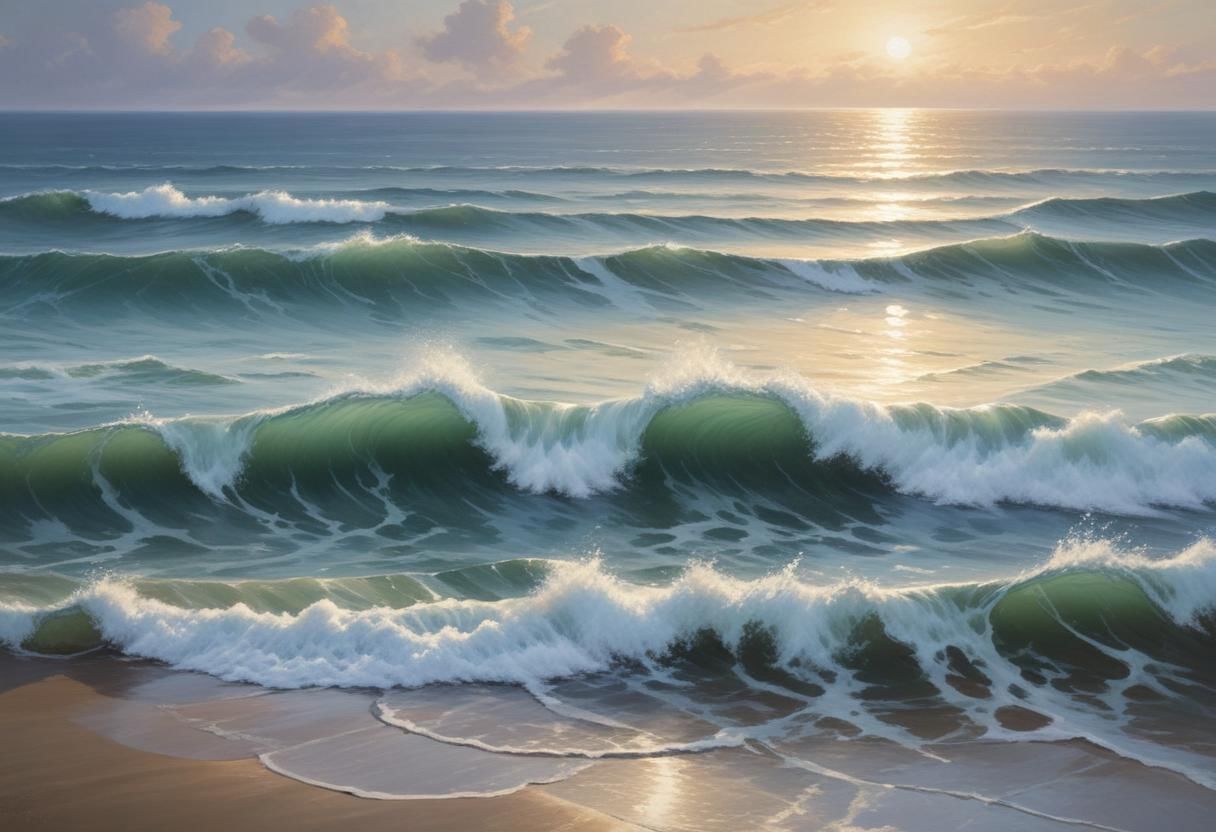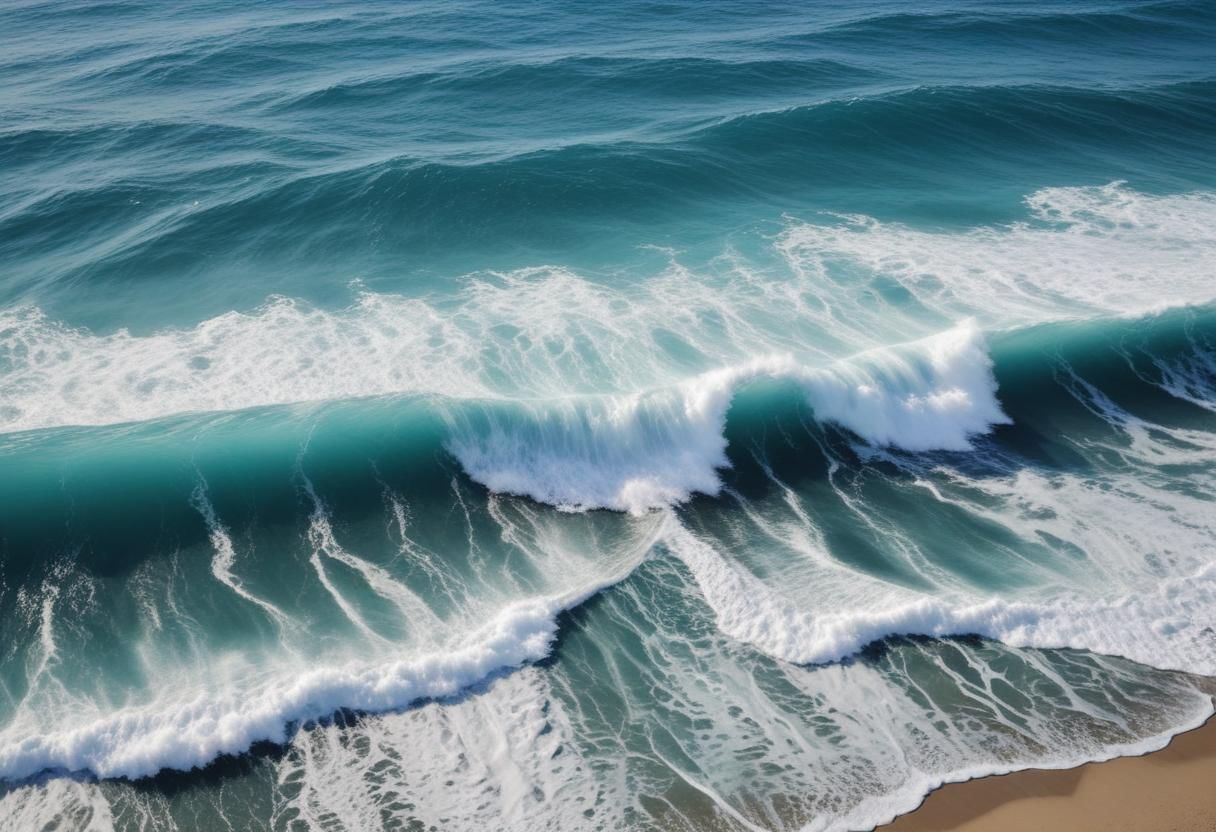The Hydrosphere Chapter Notes - Class 7 PDF Download
| Table of contents |

|
| The Water Cycle |

|
| Ocean Circulation |

|
| Spring Tides and Neap Tides |

|
| Indian Ocean Tsunami, 2004 |

|
| The Need for Water Conservation |

|
About 71% of the Earth's surface is covered with water. All the water below the Earth's surface, on it, and in the air constitutes the hydrosphere. Water is crucial for the survival of all known life forms. Water is a key natural resource used for cleaning, transportation, industrial processes, and electricity generation.

The Distribution of Water
- Oceans and seas hold approximately 97% of all water in the hydrosphere. This water is highly saline, containing a significant amount of salt, making it unsuitable for drinking.
- Only 2.5% of the hydrosphere's total water is fresh water, which can be found in rivers, streams, ponds, underground sources, glaciers, and polar ice.
- While various organisms, such as fishes and algae, thrive in the salty waters of oceans and seas, humans primarily rely on water from sources like rivers, lakes, rain, and groundwater.
The Water Cycle
- Water is constantly changing its form due to the Sun's heat.
- Water from various sources like oceans, rivers, lakes, ponds, and plants transforms into water vapor in a process called evaporation.
- After a while, water vapor cools and returns to a liquid state through condensation, forming clouds.
- When clouds become saturated, precipitation occurs, leading to rain, snow, hail, or sleet.
- Precipitation replenishes water in oceans, rivers, lakes, ponds, and underground sources.
- This continuous process of evaporation, condensation, and precipitation is known as the water cycle.
- The water cycle plays a crucial role in maintaining the balance of water on Earth's surface, underground, and in the atmosphere.
Ocean Circulation
The water in the oceans is constantly moving due to waves, tides, and currents. These movements are caused by the force of winds, the gravitational pull of the Earth, and differences in ocean water temperature.
Waves and Tides
Waves
- Waves are created when the surface of the ocean rises and falls alternately.
- Strong winds blowing across the ocean surface are the main cause of waves.
- The intensity of waves increases with the strength of the wind, generating larger waves.
Importance of Waves
- Ocean waves are significant for coastal communities, especially fishermen and the shipping industry.
- Waves serve as a tool for weather prediction.
Tides
- Huge waves can form due to storm surges, earthquakes, volcanic eruptions, underwater landslides, or other tectonic activities.
- Tides are the periodic rise and fall of ocean waters.
- During high tide, coastal areas experience rising waters, while during low tide, waters recede.
Tides are influenced by two main factors:
- The gravitational pull of the Moon and the Sun on the Earth
- The Earth's rotation
- Due to its proximity to Earth, the Moon's gravitational pull is more than twice that of the Sun, making it the primary influencer of tides.
- Waves play a crucial role for those living near the sea, such as fishermen and the shipping industry.
- They are also a useful indicator of upcoming weather changes.
- Large waves can be generated by various natural events like storms, earthquakes, volcanic eruptions, and underwater landslides.
- Tides are the regular movements of ocean water, causing high and low water levels along coastlines.
- The primary causes of tides are the gravitational forces of the Moon and the Sun on Earth, along with the Earth's rotation.
- Because of its closer proximity to Earth, the Moon exerts a stronger gravitational pull compared to the Sun, leading to its greater influence on tidal patterns.
Tides
- On the side of the Earth facing the Moon, the Moon's pull causes water to bulge.
- On the opposite side, the Moon pulls the Earth away, causing bulging on that side too.
- The bulging areas experience high tide, while areas where water recedes have low tide.
- Due to Earth's rotation, there are two high tides and two low tides daily.
Spring Tides and Neap Tides
Spring Tides:
- Occur during Full Moon and New Moon.
- High tides are higher, low tides are lower.
- Caused by combined gravitational pull of the Sun and Moon.
- Twice during each lunar month.
Neap Tides:
- Occur during Moon's quarter phase.
- High tides are lower, low tides are higher.
- Caused by partial cancellation of Moon and Sun's pull.
- Twice during each lunar month.
Importance of Tides
- Tides serve as navigational aids for sailors, facilitating entry and exit from harbors. Vessels typically enter during high tide and depart as the sea recedes during low tide.
- Tides are harnessed to produce electricity, providing a renewable energy source.
- Tides play a crucial role in aiding fishermen to enhance their catch, contributing to their livelihood.
Indian Ocean Tsunami, 2004
- One of the largest earthquakes on record hit the Indian Ocean and surrounding areas on December 26, 2004.
- This event led to a series of extremely destructive tsunamis, some of the worst ever documented.
- The tsunamis moved swiftly across the Indian Ocean, reaching heights exceeding 9 meters in certain locations.
- Coastal regions in South Asia and East Africa were inundated, resulting in the loss of approximately 250,000 lives and significant damage to land and property in fourteen countries.
- The affected countries included Indonesia, India, Sri Lanka, Myanmar, Somalia, and the Maldives.
- Had there been greater awareness of tsunami risks at the time, the impact of the disaster could have been mitigated through timely precautions.
- Subsequently, many governments have implemented Tsunami Warning Systems (TWS) equipped with sensors to detect tsunamis and a communication network for issuing prompt alerts, facilitating the evacuation of coastal areas.
Ocean Currents
- Streams of water flowing in specific directions below the ocean's surface are known as ocean currents, driven by factors like varying temperatures, Earth's rotation, winds, water density, salinity, and coastlines.
- Warm currents typically start near the equator and move towards the poles, while cold currents originate from higher latitudes or the poles and flow towards lower latitudes.
- Cold currents include the Labrador Ocean Current, the Benguela Current, and the Peru Current, while warm currents include the North Atlantic Current, the Equatorial Current, and the Gulf Stream.
Importance of Ocean Currents
- Ocean currents are vital for regulating temperatures worldwide; for instance, the North Atlantic Current warms northern Europe's climate compared to areas on the same latitude.
- Many marine animals migrate long distances by using ocean currents.
- Ocean currents aid in sea travel.
- Areas where warm and cold currents converge are excellent for fishing due to nutrient upsurges, promoting phytoplankton growth that attracts fish and marine mammals. However, mixing currents of different temperatures can cause heavy fog, disrupting marine vessel movements.
The Need for Water Conservation
Water is crucial for life on Earth. However, human actions have impacted water distribution and quality, leading to water scarcity. Let's explore some reasons:
- Dumping waste into or near water bodies contaminates them, rendering the water unusable.
- Urban expansion and construction block natural drainage channels, causing floods and inhibiting groundwater recharge.
- Deforestation is a significant threat to water conservation as forests aid groundwater recharge and rainfall.
- Extensive freshwater usage for various activities strains available water resources.
To address this, urgent water conservation measures are essential. These include:
- Rainwater harvesting
- Preventing water pollution
- Reusing water when possible
- Fixing leaking taps and pipes
FAQs on The Hydrosphere Chapter Notes - Class 7
| 1. How does the water cycle affect ocean circulation? |  |
| 2. What are spring tides and neap tides, and how do they occur? |  |
| 3. How did the Indian Ocean Tsunami in 2004 impact the region? |  |
| 4. What are some ways to conserve water in daily life? |  |
| 5. Why is it important to conserve water in the context of the hydrosphere? |  |














